Tag: Department of Molecular and Cellular Biology
-
Nation & World
Remembering biochemistry Professor Guido Guidotti
Guido Guidotti, Higgins Professor of Biochemistry, taught hundreds of students during more than 60 years of research and teaching. Guidotti died April 5 in Newton, Massachusetts, following a long battle with prostate cancer. He was 87.
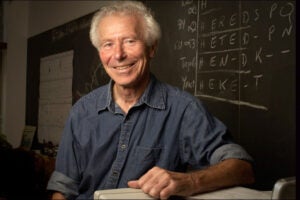
-
Nation & World
Touch and taste? It’s all in the suckers
Harvard researchers uncover novel family of sensors in octopuses.
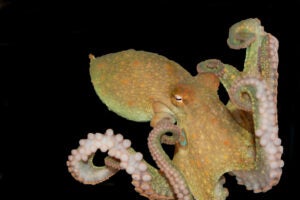
-
Nation & World
Linking sight and movement
Harvard neuroscientists look at how movement influences vision and perception.

-
Nation & World
CRISPR’s breakthrough implications
CRISPR pioneer Jennifer Doudna discussed the gene-editing technology’s rapid spread and the need for a robust discussion about the ethics of its applications.

-
Nation & World
$28M challenge to figure out why brains are so good at learning
Harvard’s John A. Paulson School of Engineering and Applied Sciences, Center for Brain Science, and Department of Molecular and Cellular Biology have been awarded more than $28 million to develop advanced machine learning algorithms by pushing the frontiers of neuroscience.
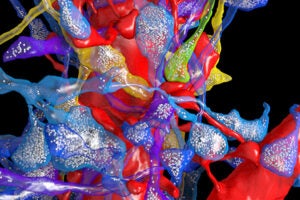
-
Nation & World
Woody Hastings, 87
J. Woodland “Woody” Hastings, the Paul C. Mangelsdorf Professor of Natural Sciences Emeritus in Harvard’s Department of Molecular and Cellular Biology, passed away on Wednesday, according to his family. He was 87.
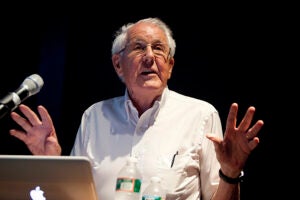
-
Nation & World
Chemist Thérèse Wilson dies at 88
Thérèse Wilson, a chemist at Harvard for more than five decades and an expert in chemiluminescence and bioluminescence, died peacefully in Cambridge on April 28.
-
Nation & World
Turning science on its head
Myelin, the electrical insulating material in the body long known to be essential for the fast transmission of impulses along the axons of nerve cells, is not as ubiquitous as thought, according to new work led by Professor Paola Arlotta.
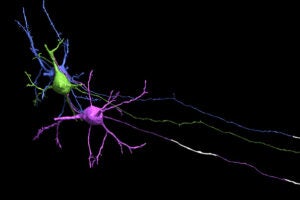
-
Nation & World
Faculty Council meeting held Feb. 12
On Feb. 12 the members of the Faculty Council met with the president to ask and answer questions as representatives of the faculty and heard a proposal from the Department of Molecular and Cellular Biology.
-
Nation & World
New avenue in neurobiology
Harvard stem cell biologists have proven that it is possible to turn one type of already differentiated neuron into another inside the brain, and their findings may have enormous implications for the treatment of neurodegenerative diseases.
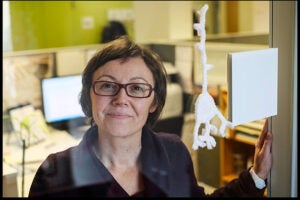
-
Nation & World
Probing sleep’s drowsy mystery
Harvard researchers have worked for years to understand better the familiar mystery of sleep, highlighting not only what happens when we close our eyes, but also the effects on us when we don’t.
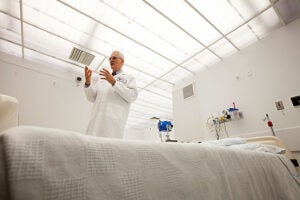
-
Nation & World
So doggone complicated
Geneticist Elaine Ostrander runs a comparative-genomics lab that examines dog DNA to understand better the traits that might aid understanding of human diseases.
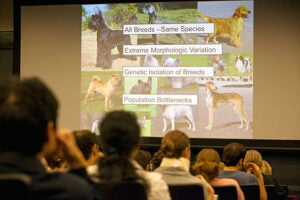
-
Nation & World
Molecular motion in detail
In a critical breakthrough in unraveling how molecular “motors” ferry proteins and nutrients through cells, Harvard scientists have produced high-resolution images that show how the chemical “foot” of dynein — one of the most complex, but least understood such motors — binds to microtubules, the cellular structures it travels on.
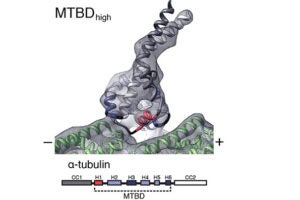
-
Nation & World
Life lessons from an old worm
Research is uncovering the genetic roots of aging, peeling back the once common understanding that creatures simply “wore out” as they aged, and slowly revealing the mechanisms that control a process determined by our genes and that proceeds at different speeds for different species.
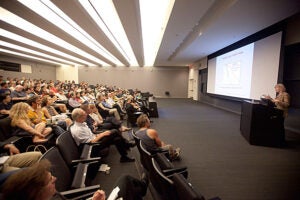
-
Nation & World
Neurons in youth
A group of researchers is working to map how the brain is wired in an effort to pinpoint the causes of — and potential treatments for — schizophrenia, autism, and a host of other disorders.
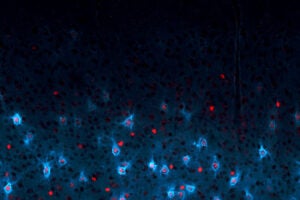
-
Nation & World
Understanding interference
In a discovery that might eventually lead to new biomedical treatments for disease, researchers from Harvard’s Department of Molecular and Cellular Biology have identified two types of RNA that are able to move between cells as part of a process called RNA-interference (RNAi).
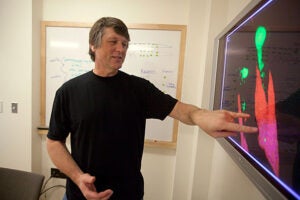
-
Nation & World
Animal scents
A Harvard study of how mice respond to scent cues from potential mates, competitors, and nearby predators has laid a foundation for further investigations that may eventually lead to a greater understanding of social recognition in the animal brain, with implications for a host of human disorders ranging from autism to post-traumatic stress disorder.
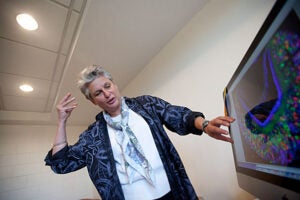
-
Nation & World
Come on, Eileen
Workers at Harvard’s Biological Laboratories organize a team to raise funds for cancer research, and to support ill colleague Eileen Snow.
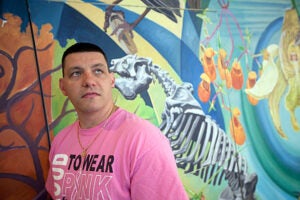
-
Nation & World
The nose knows
Harvard researchers have shed light on how the sense of smell works to induce behavior, linking patterns of electrical spikes in the brain to behavior in laboratory animals.
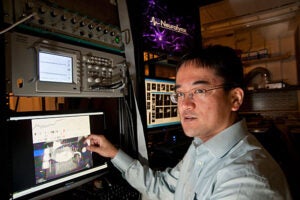
-
Nation & World
Graphene may help speed up DNA sequencing
Researchers from Harvard University and MIT have demonstrated that graphene, a surprisingly robust planar sheet of carbon just one-atom thick, can act as an artificial membrane separating two liquid reservoirs.
-
Nation & World
Exercise, calorie restrictions can rejuvenate older synapses
Harvard researchers have uncovered a mechanism in mice through which caloric restriction and exercise delay some of the debilitating effects of aging by rejuvenating the connections between nerves and the muscles that they control.
-
Nation & World
Mom’s influence comes first
Genome-wide analysis of mice brains has found that maternally inherited genes are expressed preferentially in the developing brain, while the pattern shifts decisively in favor of paternal influence by adulthood.…
-
Nation & World
‘The art of seeing things invisible’
“This is a wonderful story of collaboration and imagination,” said Harvard President Drew Faust, moments before cutting a ribbon yesterday afternoon to open the new Harvard Center for Biological Imaging (CBI). The facility,…
-
Nation & World
‘Settle down,’ warns E.O. Wilson
Esteemed biologist Edward O. Wilson called for renewed efforts to understand and conserve the planet’s biodiversity, in the first of three Prather Lectures being presented this week.
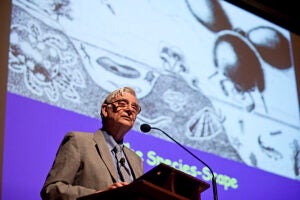
-
Nation & World
Fishing for new medications
A robust new technique for screening drugs’ effects on zebrafish behavior is pointing Harvard scientists toward unexpected compounds and pathways that may govern sleep and wakefulness in humans. Among their…
-
Nation & World
Light used to map effect of neurons on one another
Harvard scientists have used light and genetic trickery to trace out neurons’ ability to excite or inhibit one another, literally shedding new light on the question of how neurons interact…
-
Nation & World
How does a worm build a throat?
Mention worms to most people, and they probably think of fishing, gardening, or trips to the vet. Mention them to Susan E. Mango, and she begins telling you how “absolutely…
-
Nation & World
Chylack and Dowling named ARVO Fellows
The Association for Research in Vision and Ophthalmology (ARVO) has named Harvard Professor of Ophthalmology Leo T. Chylack Jr., and Gordon and Llura Gund Professor of Neurosciences John E. Dowling…


